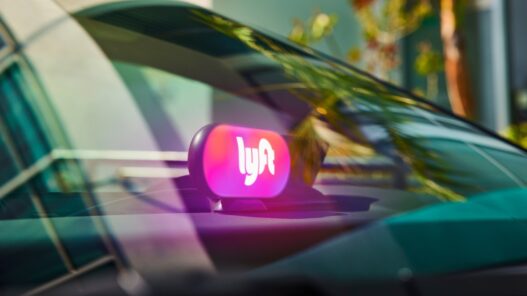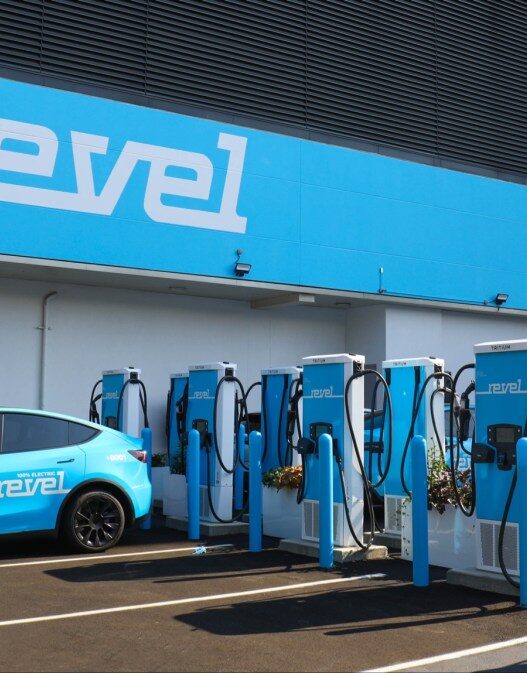The giant LYFT plans for horseback riding to bring completely independent robots, supported by Mobileye, by applying it “Just 2026” in Dallas, with more markets to follow, I learned Techcrunch exclusively.
The news comes one day before the LyFT profit report in the fourth and 2024 quarter, and coincides with Waymo preparations to launch a commercial robotics service in partnership with Uber in Austin, and later, Atlanta. Tesla also shared plans to start an independent ride in Austin in June.
Marubeni, an experienced Japanese group, will have a fleet management, and the financing of Mobileye vehicles that will appear on the Lyft’s Ride-Hailing app. Although Lyft has not yet revealed its partner in OEM for launch, the technology of advanced drivers from Mobileye is Really integrated In vehicles of Audi, Volkswagen, Nissan, Ford, General Motors, and more.
LYFT also did not participate in the number of vehicles it will launch in Dallas to start, but Jeremy Bird, the chief policy in Lift, told Techcrunch that the plan is to expand the scope of thousands of vehicles across multiple cities after the appearance of Lyft in Texas.
Marubeni’s partnership is somewhat similar to Lyft; The company owns subsidiaries through almost every industry, from food and real estate to agriculture and energy, but it has no great presence in horse or independent riding vehicles.
However, over the past few years, Marubini has begun to appear. In 2021, and The company has made a partnership with Mobileye The Movit Planning Planning app to launch the application on request in Japan. Techcrunch continues to see if this cooperation is still active.
Bird said Mobillay was a mediator between Lift and Marubini. For the Lyft’s Asset-Light, finding a partner to adhere to the vehicle’s fleet is very important.
“Mobileye’s has received technology and relationship with OEMS, and we have the platform, so the property of the fleet is the large piece of lost.” “And when you have someone who has experience (fleet management), resources and the desire to be the first engine, change the game for us.”
Marubeni will benefit from the Lyft’s Flexdrive service to help manage its fleet and maintain the use of assets. Flexdrive is the Lyft service to connect drivers who do not own rented cars. Bird says that the Lyft experience in the management of fleets – which includes charging, cleaning and maintaining vehicles, as well as real estate for operations – will come a long way to support future self -government ruling.
Bird noted that Lyft is holding talks with every major independence player about bringing them to the platform. Lyft may want to kick these conversations in the equipment as its main rival Uber kidnaps partnerships with other AV companies. Regardless of Waymo, Uber announced deals with Wayve, Avride, Series Robotics, Nuro, Aurora Innovation, Waabi and others.
Outside the Mobileye deal, Lyft only announced plans to launch AVS with May Mobility in Atlanta this year.
Lyft is slower towards autonomy not because of the lack of attempt, though. The company got its share of bad luck in AV Arena.
Lyft has previously made a partnership with Startups Motional and ARGO AI to launch Robotaxi services in Las Vegas – initially with the human safety driver behind the wheel, but the plan was a driver without driver. Then I stopped this partnership in May after the workforce was reduced, and the ARGO AI was closed in 2022. Lyft had a stake in the ARGO, and got a blow of $ 135.7 million when the company folded.
Before, Lyft tried to develop independent vehicle technology at home. Ober did the same. They both sold AV units. Uber to Aurora in December 2020, and Lev to Toyota woven in April 2021.
Bird acknowledged that Uber is one of the AV partnerships “creating urgency”, but he said that he also indicates that the publication of robotics would not focus with only one company.
He said that the goal of Lyft is now building strong partnerships with companies that develop AV Tech and companies that want to have fleets of self-government vehicles, which are in line with the Lyft’s Asset-Light’s business model.
“The rest of the value chain is the place where we really want to play a role, and this is in the management of the fleet, the generation of demand, and the market.”












